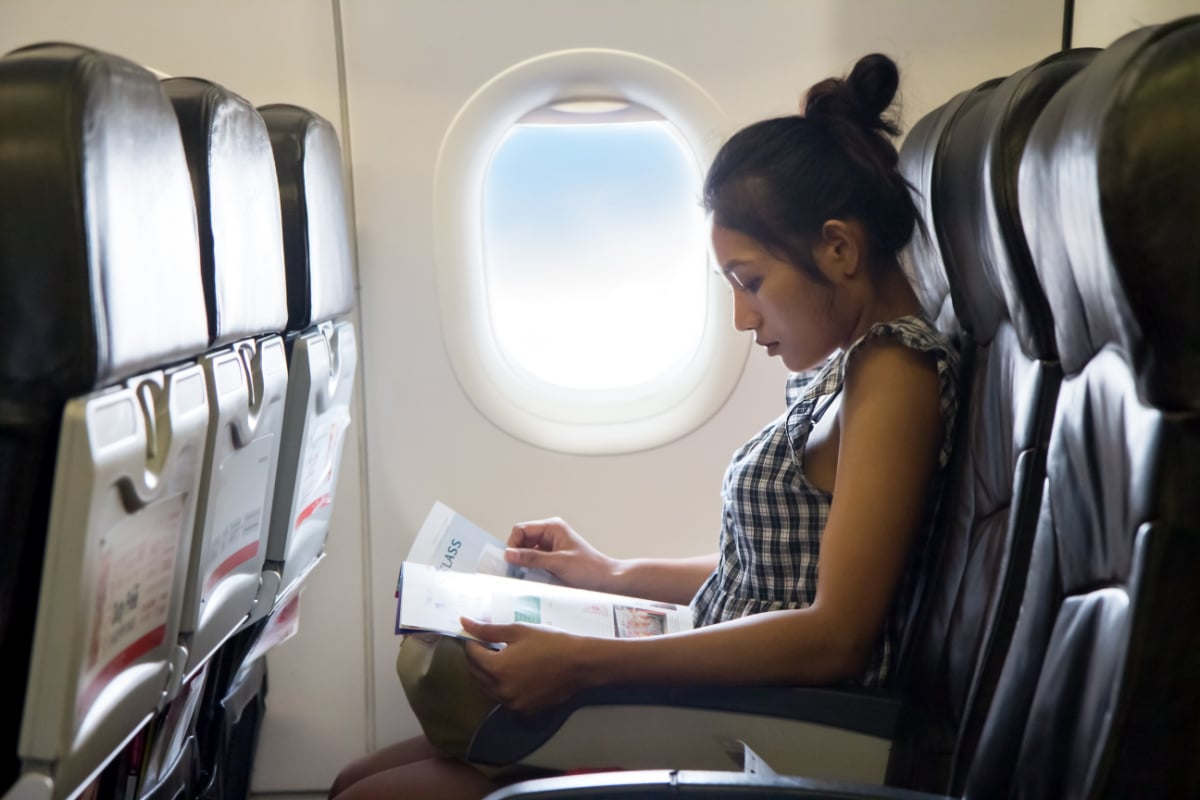[ad_1]
Last Updated
Turbulence: the main explanation for spilled ginger ale and awkward armrest grabs for vacationers in all places.
We all know that sudden stomach-dropping panic when your aircraft begins getting tossed round like a rag doll. It can really feel completely terrifying.

The excellent news: Turbulence is usually all bark and no chunk. While the stress will be excessive, the danger of harm to passengers is low. Travelers may simply stop essentially the most critical issues.
The dangerous information: Turbulence is rising and can solely worsen from right here.
What is Turbulence?
Turbulence is a climate phenomenon that causes a aircraft to shake, jolt, or transfer in an irregular means.
Different kinds of turbulence are brought on by wind from mountains and irregular terrain, by heat climate erratically heating the Earth’s floor, and by the friction of chilly and heat fronts.
Clear air turbulence is a selected type of turbulence brought on by adjustments within the path of air streams or invisible rivers of air transferring a couple of miles above the Earth’s floor. This impact is named wind shear.
Clear air turbulence occurs in cloudless clear skies at greater altitudes. Since there are not any seen warning indicators, it’s the main explanation for sudden tough skies and curler coaster rides for passengers.

Why Are Flights Getting Bumpier?
There has been a 15% improve in clear air turbulence over the previous few a long time, in response to Dr. Paul Williams, a professor of atmospheric science on the University of Reading.
“At higher altitudes where planes fly, climate change is altering temperature patterns, which creates more wind shear,” he lately instructed the Wall Street Journal. Other research verify that hotter international temperatures in Earth’s higher ambiance are creating critical wind shear issues at mid-latitudes.
In different phrases, the air the place planes fly is getting hotter, altering the trail of jet streams and creating extra of the invisible wind shear that may actually toss a aircraft round.
Dr. Williams’ meteorological mannequin predicts that clear air turbulence within the mid-Northern Hemisphere will greater than double over the following few a long time.
This means common worldwide US routes like New York to Europe and California to Asia (which largely fly by means of the excessive altitude mid-Northern Hemisphere) can count on bumpier rides.
Top 5 Travel Insurance Plans For 2023 Starting At $10 Per Week
Top 5 Travel Insurance Plans For 2023 Starting At $10 Per Week

Travelers Shouldn’t Worry
While clear air turbulence can knock your airplane up or down slightly all of the sudden, it can seemingly finish as rapidly because it began.
This sort of turbulence doesn’t often final for quite a lot of thousand toes. Your pilot can maneuver the aircraft up or down only a bit to get away from the tough skies.
While extreme turbulence is on the rise, it’s nonetheless nowhere close to widespread. The risk of great turbulence on a flight is just some tenths of a p.c. Passengers usually tend to expertise average (1%) or gentle turbulence (3%).

Injuries from extreme turbulence are additionally extremely uncommon.
On common, lower than three passengers per 12 months have been severely injured by turbulence since 2009, in response to the National Transportation Safety Board. (Most of the minimal variety of these accidents are sustained by unrestrained flight crew.)
All issues thought-about, vacationers are literally rather more likely to be upgraded to first-class than to be considerably affected by turbulence.
Turbulence detection instruments are always bettering to assist pilots predict the unpredictable. For instance, United and American Airlines now use a program referred to as SkyPath, which detects vibrations from pilots’ iPads and experiences them to different planes close by in real-time.

How To Prepare For Turbulence
There are loads of steps vacationers can take to simply put together for turbulence and forestall any critical influence.
- Book flights for earlier within the day with seats in direction of the entrance of the aircraft, 21-year flight attendant and Cruising Altitude writer Heather Poole lately advised National Geographic.
- Wear your seatbelt, and never simply when the fasten seatbelt signal is on. This applies to adults and kids. While airways don’t require young children to have their very own seat, the FAA recommends utilizing a baby security seat for kids beneath 2. This means, everybody will keep away from hitting their head on the overhead bins or knocking into the tray desk in entrance of them.

- Keep small objects tucked away. Make positive cell telephones, water bottles, and different small objects that might flip into projectiles are tied down or put away.
- Learn extra in regards to the sky. The trickiest components of turbulence are shock and helplessness. Travelers can really feel extra comfy experiencing turbulence after they know the place it’s coming from and keep in mind the robust probability that they’ll be simply fantastic.
- Don’t panic. While turbulence can really feel scary, it’s extra prone to rattle your thoughts than damage your physique. Screaming, ringing the decision button, passing infants throughout the aisle, or making an attempt to seize your belongings will solely make the state of affairs worse. Stay calm and anticipate the tough patch to cross.
Traveler Alert: Don’t Forget Travel Insurance For Your Next Trip!
↓ Join Our Community ↓
The Travel Off Path Community FB group has all the most recent reopening information, conversations, and Q&A’s occurring each day!

SUBSCRIBE TO OUR LATEST POSTS
Enter your e mail handle to subscribe to Travel Off Path’s newest breaking journey information, straight to your inbox.
This article initially appeared on TravelOffPath.com
Source link

